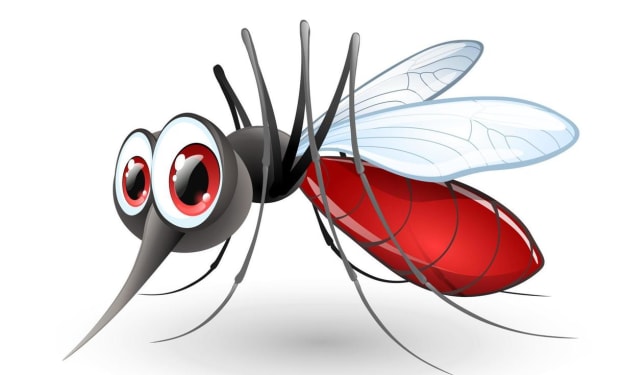Identifying Signs and Symptoms of Acne Scars
Acne scar signs and treatment

Acne is a skin condition affecting millions of people worldwide; New Jersey is no exception. It happens when the hair follicles become blocked with oil, dead skin cells, and bacteria, causing rash and infection. Acne can cause various lesions, such as whiteheads, blackheads, papules, pustules, nodules, and cysts. While some acne lesions heal without leaving any marks, others can damage the skin tissue and result in scars.
Acne scars are permanent changes in the texture and colour of the skin that occur after acne heals. They can affect the appearance, self-esteem, and quality of life of people who have them. However, identifying the acne scar can help you in your acne treatment in NJ.
Let's understand the signs and symptoms of Acne scars with the help of two main types of acne and the possible acne treatment in NJ:
Atrophic Acne Scars
Atrophic acne scars are depressed or sunken scars that form when the skin does not deliver sufficient collagen to repair the damage caused by acne. Collagen is a protein that provides the skin its strength and elasticity. Atrophic acne scars are more common on the face and can be further divided into three subtypes: ice pick, boxcar, and rolling.
• Ice pick scars are narrow and deep scars that look like small holes or punctures in the skin. They are usually less than 2 mm in diameter and extend into the dermis or subcutaneous layer of the skin. They are caused by severe acne, such as nodules or cysts, that destroy the skin tissue and leave a column-like scar.
• Boxcar scars are wide and shallow with sharp edges and a flat base. They are usually 1.5 to 4 mm in diameter and affect the superficial layer of the dermis. They are caused by moderate to severe acne, such as inflammatory papules or pustules, that damage the skin tissue and leave a rectangular or oval-shaped scar.
• Rolling scars are wide and shallow scars with smooth edges and an undulating appearance. They are usually more than 4 mm in diameter and affect the deeper layer of the dermis. They are caused by chronic or long-lasting acne, such as nodules or cysts, that create bands of fibrous tissue under the skin and pull the skin downward, creating a wave-like scar.
Hypertrophic Acne Scars
Hypertrophic acne scars are raised or thickened scars that form when the skin produces too much collagen to restore the damage caused by acne. Collagen is a protein that offers the skin its resilience and elasticity. Hypertrophic acne scars are more common on the chest, back, and shoulders, and they can be further divided into two subtypes: hypertrophic and keloid.
• Hypertrophic scars are firm and red scars confined to the acne lesion's original site. They are usually less than 4 mm in height and width and tend to fade over time. They are caused by mild to moderate acne, such as papules or pustules, that stimulate excess collagen production and create a raised scar.
• Keloid scars are hard and dark scars extending beyond the acne lesion's original site. They are usually more than 4 mm in height and width and tend to grow over time. They are caused by severe acne, such as nodules or cysts, that trigger an abnormal immune response and create an overgrown scar.
How to Treat Acne Scars
Acne scars can be challenging to treat, as they require different approaches depending on the scar's type, size, location, and severity. However, there are various dermatologist acne treatment in NJ that can improve the texture of acne scars, such as:
• Topical creams and gels: These products contain retinoids, alpha hydroxy acids, azelaic acid, or vitamin C that can help exfoliate, lighten, and stimulate the skin. They are usually used for mild to moderate acne scars, especially those with hyperpigmentation or redness.
• Chemical peels: These procedures involve applying a chemical solution to the skin, such as glycolic acid, salicylic acid, or trichloroacetic acid, that can remove the outer layer of the skin and reveal a smoother and more even skin tone. They are usually used for mild to moderate acne scars, especially those that have superficial depressions or discolouration.
• Microdermabrasion: This procedure involves using a device that sprays tiny crystals or a diamond tip to gently sand the skin and remove the dead skin cells and debris. It can improve the texture and appearance of the skin by stimulating the production of new skin cells and collagen. It is usually used for mild to moderate acne scars, especially shallow depressions or roughness.
• Microneedling: This procedure involves using a device with fine needles to create tiny punctures in the skin and stimulate the healing process and the production of new collagen and elastin. It can improve the texture and appearance of the skin by reducing the depth and width of the scars and smoothing the skin surface. It is usually used for moderate to severe acne scars, intense depressions or rolling.
• Laser resurfacing: This procedure involves using a device that emits a beam of light to vaporize the damaged skin tissue and stimulate the growth of new skin cells and collagen. It can improve the texture and appearance by reducing the depth and width of the scars and smoothing the skin surface. It is usually used for moderate to severe acne scars, intense depressions or boxcar scars.
• Dermal fillers: These fillers are injected into the skin to fill the depressed areas and restore the volume and shape of the skin. They can enhance the texture of the skin by reducing the depth and width of the scars and smoothing the skin surface. They are usually used for moderate to severe acne scars, intense depressions or rolling.
Now that you are aware of the different acne scars, we hope you can find the signs and symptoms early and rectify the scar as soon as possible.
About the Creator
Jessica Smith
Jessica is a marketing specialist and essay writer in essay writing service. She loves to share her ideas and knowledge about marketing, writing and blogging with her followers through various blogging planforms.






Comments
There are no comments for this story
Be the first to respond and start the conversation.